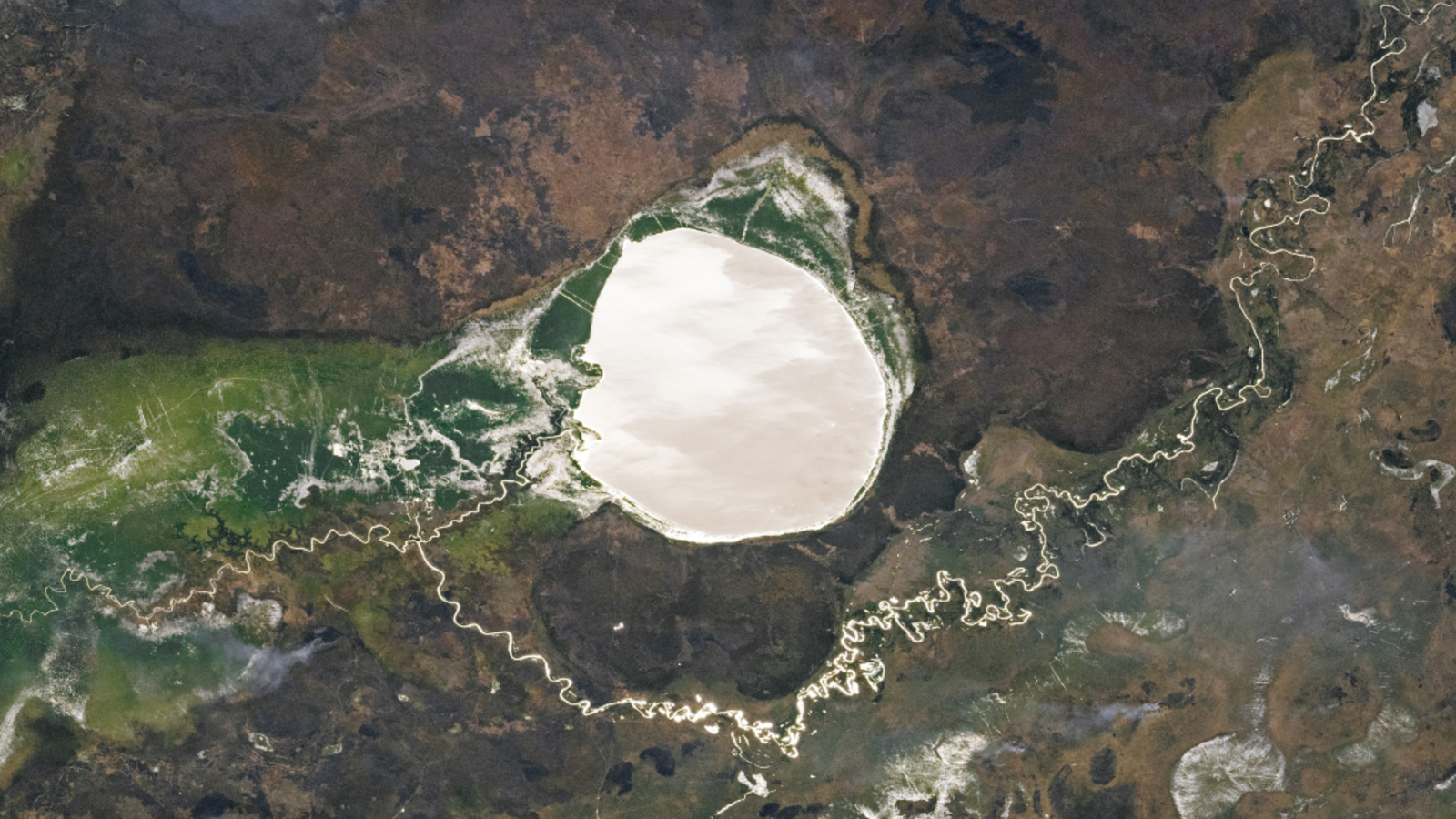Lake-filled impact crater in Africa transforms into a giant silver 'mirror' via rare phenomenon — Earth from space
A 2024 astronaut photo shows a rare "sunglint" shining off Lake Iro and a nearby zig-zagging river in Chad. The shimmering bodies of water were likely both shaped by an ancient meteor impact.

Where is it? Lake Iro, Chad [10.10150087, 19.41766527]
What's in the photo? Sunlight reflecting off the lake and the surrounding river
Who took the photo? An unnamed astronaut on board the International Space Station (ISS)
When was it taken? Dec. 21, 2024
This stunning astronaut photo shows a rare phenomenon, known as a "sunglint", transforming a potential meteor crater lake into a giant silver mirror in the heart of Africa.
Lake Iro, known locally as Lac Iro, is an approximately 7-mile-wide (12 kilometers) body of water in Chad, located around 60 miles (100 km) north of the country's border with the Central African Republic. The lake lies in the heart of Africa's Sahel region — an extensive savannah that separates the Sahara Desert and the rainforests of Central Africa.
Iro is partly surrounded by Bahr Salamat, a roughly 125-mile-long (200 km) waterway that splits and feeds into the lake. The river is renowned for being exceptionally windy, especially where it bends around Iro's southern shore, according to NASA's Earth Observatory.
The lake and large sections of the river shine brightly in the image as sunlight reflects off their watery surfaces, giving them a metallic-like sheen. If you look closely, parts of its surface appear to have a whiter color than the rest. These areas are most likely reflections of the clouds hanging high over the lake.
This phenomenon is known as a sunglint, and only occurs when the observer is perfectly aligned with the sun, relative to the object reflecting the light. As a result, this effect is best observed from space.
Related: See all the best images of Earth from space

Astronauts are particularly well-suited to capturing sunglints because they can alter their angle relative to the reflecting object, unlike satellites that have a fixed view. In recent years, ISS inhabitants have also spotted a massive sunglint around a pair of Greek islands, which revealed several unusual oceanographic phenomena, and another that painted a "sea of clouds" in a volcanic lake nestled between nesting Russian volcanoes.
Get the world’s most fascinating discoveries delivered straight to your inbox.
Suspected impact crater
Recent research suggests Lake Iro may lie within an ancient meteor impact crater leftover from when a sizable space rock slammed into Earth millions of years ago.
This theory was first put forward in the 1980s, when geologists discovered bits of ancient crystal in the rocks surrounding the lake, according to a 2014 study reviewing African impact structures.
In a more recent study, published in 2024, researchers investigated the geological features of Lake Iro. They noted that an impact may have significantly altered the shape and direction of Bahr Salamat, which may explain why there are so many twists and turns to the winding river.
Lake Iro is also highly cyclical, meaning that its depth fluctuates seasonally and can almost completely drain during periods of extreme drought, which is a common characteristic among other impact crater lakes.
Based on this evidence, the researchers of the most recent study wrote that Lake Iro "cannot be readily explained by any process other than [a meteor] impact."
More research is needed to confirm if this is the case, and this "should be a priority" due to its size. The researchers added that evidence of the impact may have been well preserved by the lake.

Harry is a U.K.-based senior staff writer at Live Science. He studied marine biology at the University of Exeter before training to become a journalist. He covers a wide range of topics including space exploration, planetary science, space weather, climate change, animal behavior and paleontology. His recent work on the solar maximum won "best space submission" at the 2024 Aerospace Media Awards and was shortlisted in the "top scoop" category at the NCTJ Awards for Excellence in 2023. He also writes Live Science's weekly Earth from space series.
You must confirm your public display name before commenting
Please logout and then login again, you will then be prompted to enter your display name.


